-
 Bitcoin
Bitcoin $107,443.3008
-1.17% -
 Ethereum
Ethereum $2,494.2503
-0.63% -
 Tether USDt
Tether USDt $1.0003
0.00% -
 XRP
XRP $2.2496
2.23% -
 BNB
BNB $658.7569
0.63% -
 Solana
Solana $154.9826
1.94% -
 USDC
USDC $1.0000
0.01% -
 TRON
TRON $0.2799
1.07% -
 Dogecoin
Dogecoin $0.1659
-1.78% -
 Cardano
Cardano $0.5745
0.25% -
 Hyperliquid
Hyperliquid $39.7005
0.13% -
 Bitcoin Cash
Bitcoin Cash $519.5989
3.78% -
 Sui
Sui $2.7874
-2.40% -
 Chainlink
Chainlink $13.3762
-1.69% -
 UNUS SED LEO
UNUS SED LEO $9.0784
-0.64% -
 Avalanche
Avalanche $17.9846
-2.81% -
 Stellar
Stellar $0.2390
-0.06% -
 Toncoin
Toncoin $2.9028
0.25% -
 Shiba Inu
Shiba Inu $0.0...01147
-2.17% -
 Litecoin
Litecoin $86.6956
-1.27% -
 Hedera
Hedera $0.1508
-0.50% -
 Monero
Monero $322.6222
3.26% -
 Polkadot
Polkadot $3.4124
-2.99% -
 Dai
Dai $0.9999
0.00% -
 Bitget Token
Bitget Token $4.5434
-1.97% -
 Ethena USDe
Ethena USDe $1.0002
0.00% -
 Uniswap
Uniswap $7.1562
-2.61% -
 Aave
Aave $275.8830
-1.02% -
 Pepe
Pepe $0.0...09790
-4.04% -
 Pi
Pi $0.5018
-5.09%
Where can I see the position data of LBank contracts? What reference value does it have for trading?
To access position data on LBank, log in, navigate to the trading section, select your contract, and find the "Position Data" tab for insights into market sentiment and liquidity.
May 05, 2025 at 08:02 am
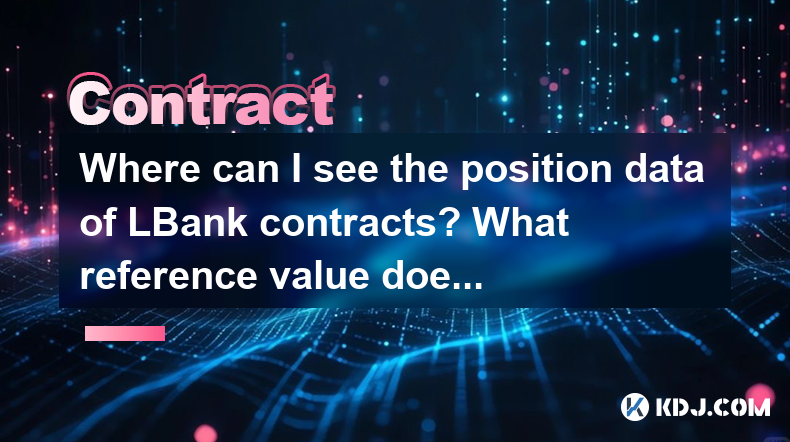
LBank, as a prominent cryptocurrency exchange, offers a variety of trading services, including futures and perpetual contracts. One of the key pieces of information that traders often seek is the position data of these contracts. Understanding where and how to access this data, as well as its reference value for trading, can significantly enhance a trader's strategy and decision-making process.
Accessing Position Data on LBank
To access the position data of LBank contracts, traders need to navigate through the exchange's platform. Here's a detailed guide on how to do it:
- Log into your LBank account. If you do not have an account, you will need to create one and complete the necessary verification processes.
- Navigate to the trading section. Once logged in, you can find the trading section either on the main page or through the top navigation menu.
- Select the contract you are interested in. LBank offers various types of contracts, such as futures and perpetual contracts. Choose the specific contract whose position data you want to view.
- Access the position data. Once you are on the specific contract page, look for a tab or section labeled "Position Data" or "Open Interest". This section will display the current open positions, including long and short positions, as well as other relevant data such as the number of contracts and the total value of the positions.
Understanding Position Data
Position data on LBank includes several key metrics that traders should understand:
- Open Interest: This represents the total number of outstanding contracts that have not been settled. Open Interest can provide insights into the liquidity and market sentiment of a particular contract.
- Long and Short Positions: These metrics show the number of traders who are betting on the price of the contract to go up (long) or down (short). A discrepancy between long and short positions can indicate market sentiment and potential price movements.
- Volume: This refers to the total number of contracts traded within a specific period. High trading volume can indicate strong interest and liquidity in the market.
The Reference Value of Position Data for Trading
Position data holds significant reference value for traders looking to make informed decisions. Here are some ways in which this data can be utilized:
- Market Sentiment Analysis: By analyzing the ratio of long to short positions, traders can gauge the overall market sentiment. A higher number of long positions might suggest bullish sentiment, while a higher number of short positions could indicate bearish sentiment.
- Liquidity Assessment: Open Interest and volume data can help traders assess the liquidity of a contract. High liquidity is crucial for entering and exiting positions without significant slippage.
- Trend Identification: Position data can help identify trends. For instance, a consistent increase in open interest alongside rising prices might confirm an uptrend, while a decrease in open interest during a price decline could signal a potential reversal.
- Risk Management: By understanding the positions of other traders, one can better manage their own risk. For example, if there is a significant concentration of short positions, a trader might consider the potential for a short squeeze and adjust their strategy accordingly.
Utilizing Position Data in Trading Strategies
Traders can incorporate position data into their trading strategies in several ways:
- Contrarian Trading: If the majority of positions are heavily skewed in one direction, a contrarian trader might take the opposite position, betting on a potential reversal.
- Trend Following: Traders who follow trends might use position data to confirm their analysis. For example, if both price and open interest are increasing, it might reinforce a decision to enter a long position.
- Hedging: Position data can also be used to hedge existing positions. If a trader sees a large build-up of short positions, they might hedge their long positions to mitigate potential losses.
Practical Example of Using Position Data
Let's consider a practical example of how a trader might use position data on LBank:
- Suppose a trader is looking at the BTC/USDT perpetual contract on LBank. They navigate to the position data section and observe the following:
- Open Interest: 10,000 contracts
- Long Positions: 6,000 contracts
- Short Positions: 4,000 contracts
- Volume: 2,000 contracts traded in the last hour
From this data, the trader might infer that the market sentiment is slightly bullish, given the higher number of long positions. They might also note that the open interest is relatively high, indicating good liquidity. If the trader believes the bullish trend will continue, they might decide to enter a long position. Conversely, if they are a contrarian trader, they might see this as an opportunity to short the market, anticipating a potential reversal.
FAQs
Q1: Can position data be used to predict price movements accurately?
A1: While position data can provide valuable insights into market sentiment and liquidity, it should not be used as the sole basis for predicting price movements. It is one of many tools that traders can use to inform their decisions, and it should be combined with other forms of analysis, such as technical and fundamental analysis, for a more comprehensive trading strategy.
Q2: How frequently is position data updated on LBank?
A2: Position data on LBank is typically updated in real-time or near real-time, allowing traders to access the most current information. However, the exact frequency can depend on the specific contract and market conditions.
Q3: Is position data available for all types of contracts on LBank?
A3: Position data is generally available for most futures and perpetual contracts on LBank. However, the availability can vary, and traders should check the specific contract page to confirm if position data is provided.
Q4: Can I access historical position data on LBank?
A4: LBank provides real-time position data, but access to historical position data might be limited. Some exchanges offer historical data through their API or third-party data providers, but traders should check LBank's specific offerings to see if this data is available.
Disclaimer:info@kdj.com
The information provided is not trading advice. kdj.com does not assume any responsibility for any investments made based on the information provided in this article. Cryptocurrencies are highly volatile and it is highly recommended that you invest with caution after thorough research!
If you believe that the content used on this website infringes your copyright, please contact us immediately (info@kdj.com) and we will delete it promptly.
- Bitcoin, Bitfinex, and Acceleration: Decoding the Crypto Crossroads
- 2025-07-01 12:50:11
- SOL, XRP, LTC ETFs: Are We on the Cusp of Crypto History?
- 2025-07-01 12:50:11
- BNB Chain's Maxwell Upgrade: Sub-Second Blocks and a Whole Lotta Speed!
- 2025-07-01 13:10:12
- Bitcoin, Ethereum, Crypto Decline? Nah, Just a New York Minute!
- 2025-07-01 13:10:12
- Coinpass: The Gold-Standard Crypto Platform for UK Businesses
- 2025-07-01 12:30:12
- Tokenized ETFs, Robinhood, and Europe: A New Era of Finance?
- 2025-07-01 12:30:12
Related knowledge
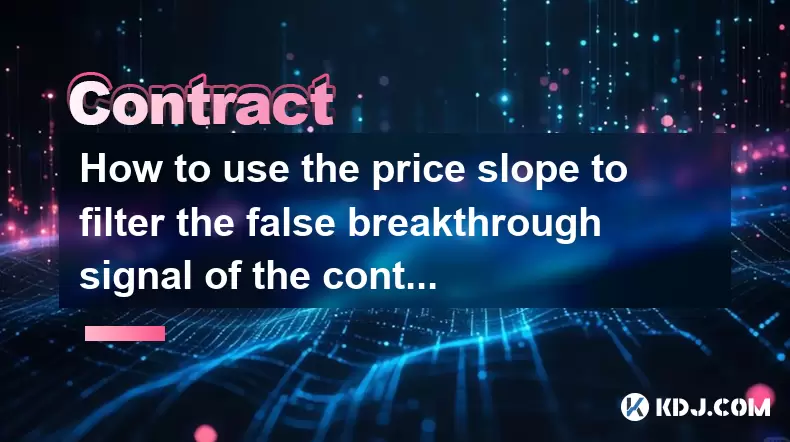
How to use the price slope to filter the false breakthrough signal of the contract?
Jun 20,2025 at 06:56pm
Understanding the Concept of Price Slope in Contract TradingIn contract trading, especially within cryptocurrency derivatives markets, price slope refers to the rate at which the price changes over a specific time period. It helps traders assess the strength and sustainability of a trend. A steep slope may indicate strong momentum, while a shallow slope...
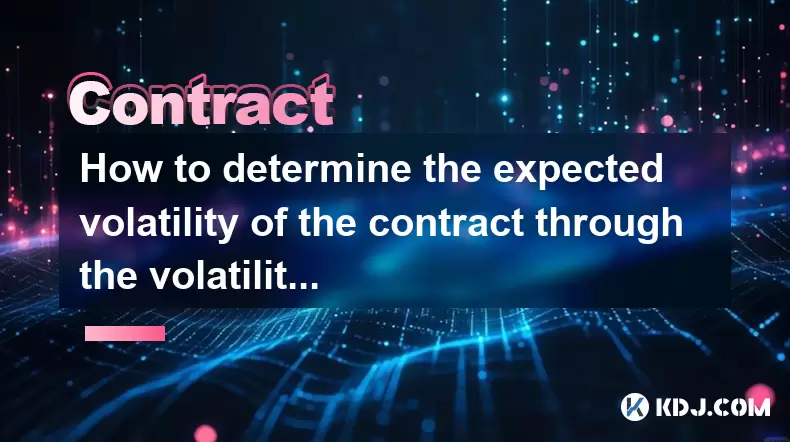
How to determine the expected volatility of the contract through the volatility cone?
Jun 19,2025 at 12:28pm
Understanding the Basics of Volatility in Cryptocurrency ContractsIn the realm of cryptocurrency trading, volatility is a key metric that traders use to assess potential risk and reward. When dealing with futures contracts, understanding how volatile an asset might become over time is crucial for position sizing, risk management, and strategy developmen...
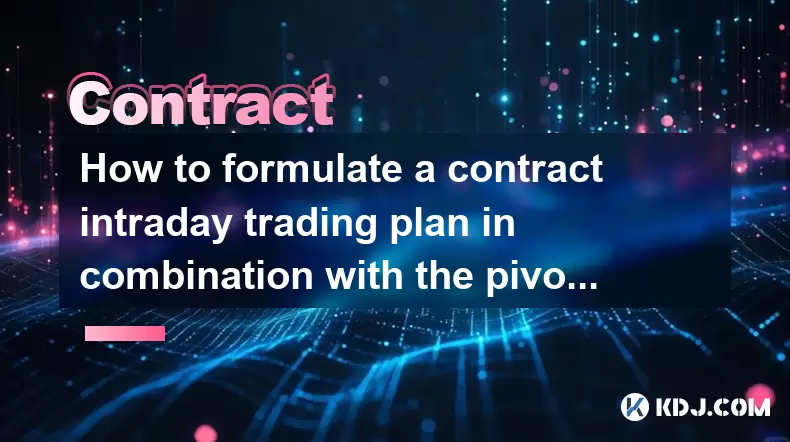
How to formulate a contract intraday trading plan in combination with the pivot point system?
Jun 21,2025 at 03:42pm
Understanding the Basics of Pivot Points in Cryptocurrency TradingPivot points are technical analysis tools used by traders to identify potential support and resistance levels. These levels are calculated using the previous day's high, low, and closing prices. In the context of cryptocurrency trading, where markets operate 24/7, pivot points help trader...
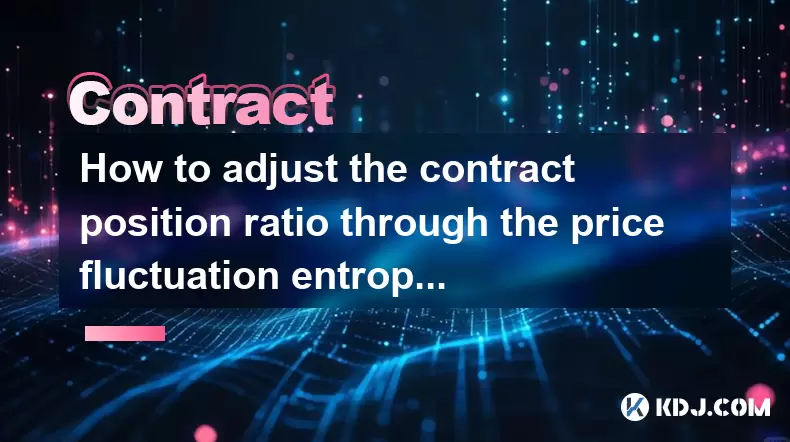
How to adjust the contract position ratio through the price fluctuation entropy?
Jun 22,2025 at 11:42am
Understanding Price Fluctuation Entropy in Cryptocurrency ContractsIn the world of cryptocurrency futures trading, price fluctuation entropy is a relatively new concept used to measure market volatility and uncertainty. It derives from information theory, where entropy refers to the degree of randomness or unpredictability in a system. In crypto contrac...
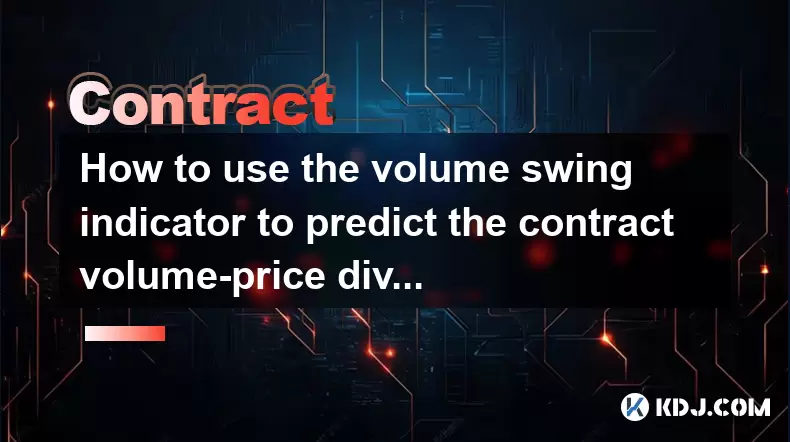
How to use the volume swing indicator to predict the contract volume-price divergence?
Jun 18,2025 at 11:42pm
Understanding the Volume Swing IndicatorThe volume swing indicator is a technical analysis tool used primarily in cryptocurrency trading to evaluate changes in volume over time. Unlike price-based indicators, this metric focuses solely on trading volume, which can provide early signals about potential market reversals or continuations. The key idea behi...
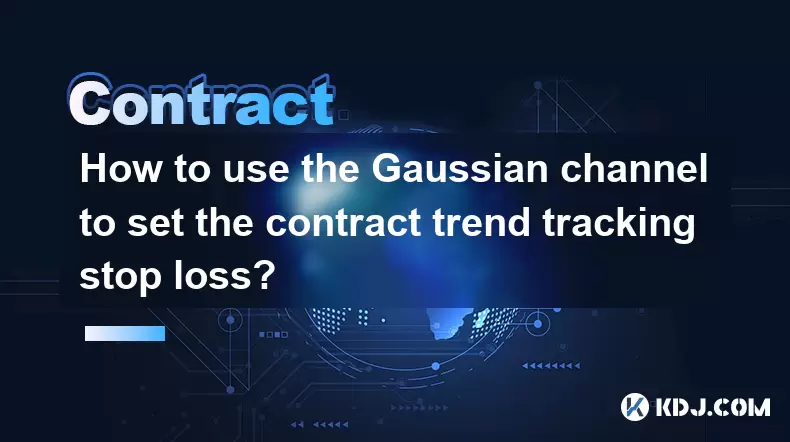
How to use the Gaussian channel to set the contract trend tracking stop loss?
Jun 18,2025 at 09:21pm
Understanding the Gaussian Channel in Cryptocurrency TradingThe Gaussian channel is a technical indicator used primarily in financial markets, including cryptocurrency trading, to identify trends and potential reversal points. It is based on statistical principles derived from the normal distribution, commonly known as the Gaussian distribution or bell ...

How to use the price slope to filter the false breakthrough signal of the contract?
Jun 20,2025 at 06:56pm
Understanding the Concept of Price Slope in Contract TradingIn contract trading, especially within cryptocurrency derivatives markets, price slope refers to the rate at which the price changes over a specific time period. It helps traders assess the strength and sustainability of a trend. A steep slope may indicate strong momentum, while a shallow slope...

How to determine the expected volatility of the contract through the volatility cone?
Jun 19,2025 at 12:28pm
Understanding the Basics of Volatility in Cryptocurrency ContractsIn the realm of cryptocurrency trading, volatility is a key metric that traders use to assess potential risk and reward. When dealing with futures contracts, understanding how volatile an asset might become over time is crucial for position sizing, risk management, and strategy developmen...

How to formulate a contract intraday trading plan in combination with the pivot point system?
Jun 21,2025 at 03:42pm
Understanding the Basics of Pivot Points in Cryptocurrency TradingPivot points are technical analysis tools used by traders to identify potential support and resistance levels. These levels are calculated using the previous day's high, low, and closing prices. In the context of cryptocurrency trading, where markets operate 24/7, pivot points help trader...

How to adjust the contract position ratio through the price fluctuation entropy?
Jun 22,2025 at 11:42am
Understanding Price Fluctuation Entropy in Cryptocurrency ContractsIn the world of cryptocurrency futures trading, price fluctuation entropy is a relatively new concept used to measure market volatility and uncertainty. It derives from information theory, where entropy refers to the degree of randomness or unpredictability in a system. In crypto contrac...

How to use the volume swing indicator to predict the contract volume-price divergence?
Jun 18,2025 at 11:42pm
Understanding the Volume Swing IndicatorThe volume swing indicator is a technical analysis tool used primarily in cryptocurrency trading to evaluate changes in volume over time. Unlike price-based indicators, this metric focuses solely on trading volume, which can provide early signals about potential market reversals or continuations. The key idea behi...

How to use the Gaussian channel to set the contract trend tracking stop loss?
Jun 18,2025 at 09:21pm
Understanding the Gaussian Channel in Cryptocurrency TradingThe Gaussian channel is a technical indicator used primarily in financial markets, including cryptocurrency trading, to identify trends and potential reversal points. It is based on statistical principles derived from the normal distribution, commonly known as the Gaussian distribution or bell ...
See all articles

























































































